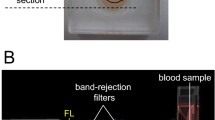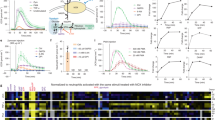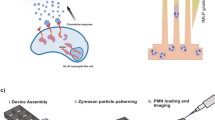Abstract
Summary: Human neutrophils stimulated with either latex particles or opsonized zymosan exhibited equivalent rates of net oxygen consumption as well as hydrogen peroxide release. The quantity of superoxide (O2-) detected in latex-stimulated neutrophils was less than 2% of that seen with opsonized zymosan stimulation, and only several-fold greater than that of resting cells. The failure to detect O2- in the latex-stimulated neutrophils was due neither to latex acting as a O2- scavenger nor to its interference with the O2- - forming system of the neutrophil. An intracellular site of O2- generation could not be demonstrated. NADPH oxidase activity in cells exposed to latex particles was only 10% of that seen in cells comparably activated with opsonized zymosan. Latex particles have the unusual property of stimulating the respiratory burst of the human neutrophil without the extracellular release of O2-. The potential physiologic importance of this finding is discussed.
Similar content being viewed by others
Log in or create a free account to read this content
Gain free access to this article, as well as selected content from this journal and more on nature.com
or
Author information
Authors and Affiliations
Rights and permissions
About this article
Cite this article
Curnutte, J., Tauber, A. Failure to Detect Superoxide in Human Neutrophils Stimulated With Latex Particles(21). Pediatr Res 17, 281–284 (1983). https://doi.org/10.1203/00006450-198304000-00011
Issue date:
DOI: https://doi.org/10.1203/00006450-198304000-00011
This article is cited by
-
Human neutrophils stimulated by cetyltrimethyl ammonium bromide generate luminol-amplified and non-amplified chemiluminescence but no superoxide production: A paradox
Inflammopharmacology (1992)
-
Measurement of oxygen consumption of human neutrophils by spin probe
Bulletin of Experimental Biology and Medicine (1989)
-
The effect of dialysate on peritoneal phagocyte oxidative metabolism
Kidney International (1988)
-
Polyl-histidine
Inflammation (1987)
-
Neutrophils may directly synthesize both H2O2 and O2 ? since surface stimuli induce their release in stimulus-specific ratios
Inflammation (1985)



